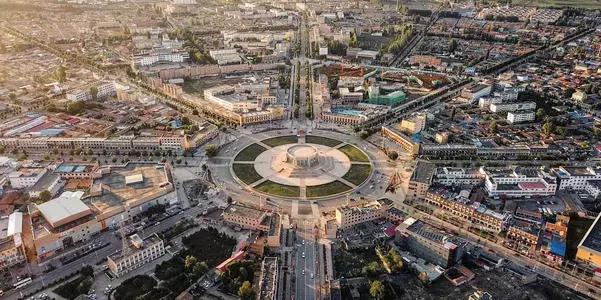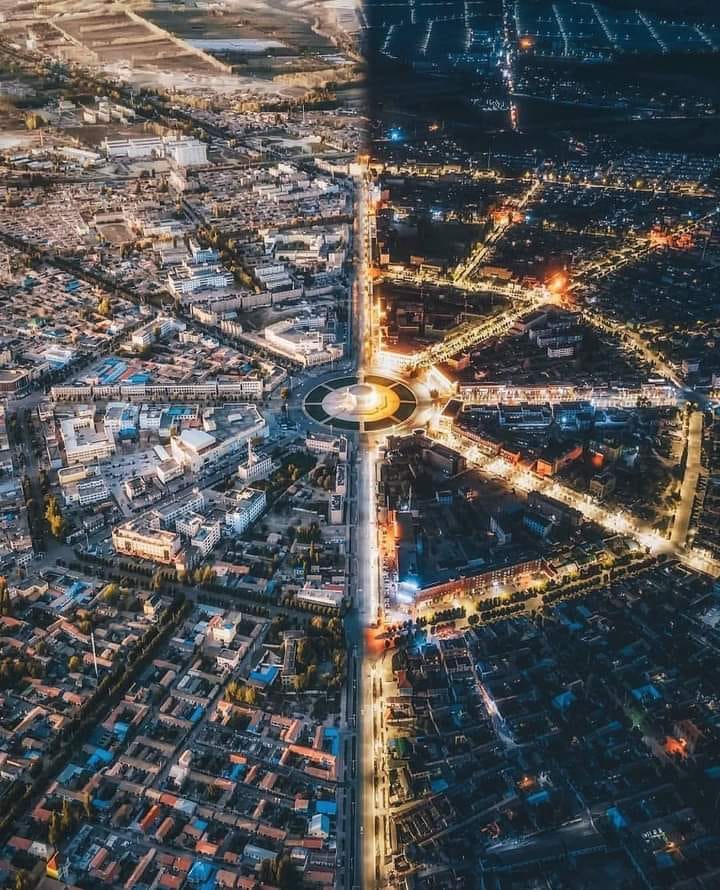Octagonal City
Tekes City (Han Viet: Dac Tu) is a small city located in Yili, Xinjiang Autonomous Region, China. The city is designed according to the Bagua layout, the ground is inclined at a small angle from North to South to help flood water drain quickly.

Tekes city from above.
Legend has it that the city's Bagua layout was designed by a Song Dynasty priest named Qiu Chuji. This design was gradually perfected by later generations and by 1936, the special city it is today was formed. The entire city is based on the Bagua direction, surrounded by four large circles of eight main roads including Qian, Kun, Xun, Zhen, Kan, Li, Gen, and Dui.
The first circle consists of 8 streets, the second circle consists of 16 streets, gradually expanding until the outer circle has a total of 64 streets. This design is not only for aesthetic value but also has the main function of preventing flooding.

Because the eight main roads in the Bagua extend in all directions, floods will drain quickly no matter which direction they come from. Importantly, the city's surface slopes slightly from North to South. This helps the process of draining water from the city happen faster. Even if sudden rains and floods occur, the city will still be prevented from flooding.
The city has no traffic lights
Another unique feature of this city is that there are no traffic lights on the streets. Planning experts analyze that thanks to the continuous and interconnected streets, this town does not have traffic jams. Cars or pedestrians can get to their destination from any direction. In 1996, the authorities removed the traffic lights on the streets and since then, it has become a city without traffic lights.

city without traffic lights
Although convenient for locals, this city is difficult for many tourists. The reason is that the streets here are so similar that people who are not familiar with it will have difficulty determining directions and will get lost.


































